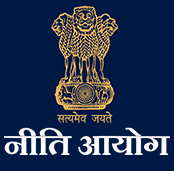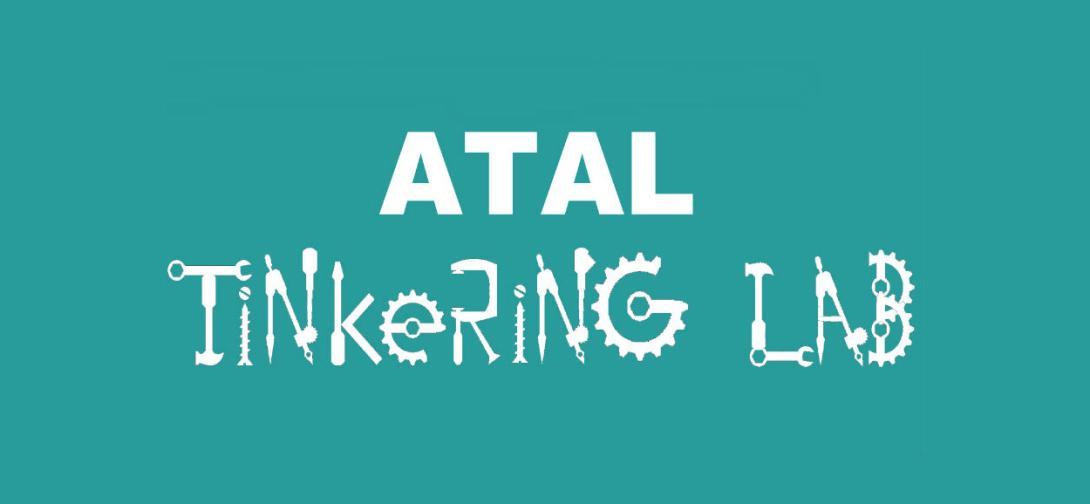Giddy-up! - Say The Young Indians
Through Tinkerpreneur, ATLs are nudging the younger generation to build an India that is self-reliant and innovative, a nation of proud Indians that live, learn and create in India, for the world.
Imagine This - You are in an open room with large windows; on one side you can see robots following commands coded by children, a group of students tinkering with a device that they created to reduce farmer’s ploughing time by half, a bunch of 11-year-olds with twinkling eyes looking at the 3D printer with eager anticipation waiting for their superhero badge to be printed, a gang of back-benchers who were always judged on their exam grades, now concentrating on tweaking their drone, which they made from scratch, with an objective to deliver medicines to remote areas of the nation and finally you see a smart robot dustbin automatically picking up trash from the lab at the end of their day.
Sounds like the plot of futuristic cinema? What if I told you that this is what every day looks like within an Atal Tinkering Lab (ATL) in a government school of a rural area in Chhattisgarh.
Atal Innovation Mission (AIM), NITI Aayog’s ATLs are free learning spaces where the power and imagination of a child’s mind is on a glorious display. They are housed within 8000 schools, majority of which are government schools in rural areas spread across 35 states & UTs and 638 districts of India. Since the last 4 years, ATLs have given students & teachers access to latest technologies, ignited new ideas and nurtured the creative and innovative minds of more than 24 lakh children of India.
As we approach 15th of August and the 75th year of Independence, we are reminded of India’s numerous achievements since Independence. It has been 75 years of emerging as an Atma-Nirbhar nation, one step at a time. Starting with the Green revolution followed by the White revolution where India became not just self-reliant but an exporter of agriculture and dairy products to the world. India has not only made strides in the industrial revolution be it in Healthcare, Telecom, IT or Space, but we have shown the world that innovations are possible with minimal resources and frugal infrastructure if one can identify opportunities and fill the gaps with indigenous solutions. To think differently in order to do more with less is a characteristic that is entwined within the very essence of a common Indian citizen.
India has steadily risen the ranks in the Global Innovation Index to secure itself a rank of 48 in the world. One of the main input parameters of the index is the no. of patents filed from the country. In 2020, India has filed 45,000 patents. However, a report from ORF, shockingly reveals that 75% of these patents have been filed by non-resident Indians. For comparison, this number is below 25% in China, Japan and France.
The numbers can be attributed to severe brain drain which is a major factor is hampering the growth of India in a pace that should be expected from a country with 80% citizens below the age of 44. Finding a solution to this could potentially leapfrog us into the Top 15 most innovative countries by 2035.
The urgency to ensure that the brightest minds of India are identified, nurtured and empowered to live, learn and succeed in India is now more prominent than ever. This can be achieved through two broad steps. First: Inspire innovation within students. In the last 4 years ATLs have been successful in inculcating this mindset of problem-solving within children. There have been over 1.3 lakh prototypes and innovations created by young students which are poised to solve many local and national level challenges. Second: Enable & Implement Innovation from students:- Develop an ecosystem that can absorb young innovators and provide them with guidance and opportunities to succeed.
To complement innovation within ATLs, there was a need to empower young innovators with entrepreneurship skills that will help take their solutions to those in need, and thus, the idea of Tinkerpreneur was born. It is a nine-week long cohort-based virtual bootcamp, designed to equip students with entrepreneurship skills to create their own digital ventures during the summer break.
As students all over the world completed over a year of virtual schooling this summer, Tinkerpreneur was a unique opportunity to break the notion of tinkering within a fixed space to tinkering with students across borders, across languages and across cultures.
Tinkerpreneur saw over 9000 students from grades 6-12 learn entrepreneurship across 7 languages from over 650 industry professionals who are Mentors of Change (MoC) and who volunteer their time to mentor students. At the end, the success of the bootcamp could be attributed to three major pillars:
-
Centralised and Decentralised Mentoring – The virtual nature of the bootcamp allowed for both a centralised and de-centralised approach to mentoring students. This combined mentoring plan was the backbone of the bootcamp which allowed students to learn complex business skills such as business finance, marketing, business models and how to pitch their ventures to potential investors.
-
Robust Technology – A customised learning resource portal was developed which allowed students and mentors to access curated content, strategically divided over 9 weeks of the curriculum. The portal also enabled students to test their learning through simple quizzes and slightly more challenging assignments which they submitted per week. Most importantly, the circle of learning was complete because mentors could review and give feedback to students for their assignments via the portal itself. This seamless flow of information between mentee and mentor enhanced the experience of all participants and allowed learning to take place in a self-paced manner.
-
Inclusivity and flexibility – The bootcamp was AIM’s first step towards ensuring ease of access and ease of comprehension for all those in India. Conducting mentoring sessions in 6 regional languages of India ensured that over 95% of registered students can learn in their primary language. The technology portal and live sessions were also accessible on the phone ensuring even those with limited resources are not left behind.
Through Tinkerpreneur, ATLs are nudging the younger generation to build an India that is self-reliant and innovative, a nation of proud Indians that live, learn and create in India, for the world.
*This article was published in Business World
Swati Rao is Innovation Lead, Atal Innovation Mission, NITI Aayog
Varya Srivastava is the Director of Business Development and Government Affairs at Network Capital, and leads its partnership with Indian think tank NITI Aayog’s Atal Innovation Mission.
Disclaimer: The views expressed in the article above are those of the authors' and do not necessarily represent or reflect the views of this publishing house. Unless otherwise noted, the author is writing in his/her personal capacity. They are not intended and should not be thought to represent official ideas, attitudes, or policies of any agency or institution.
 National Portal Of India
National Portal Of India 







